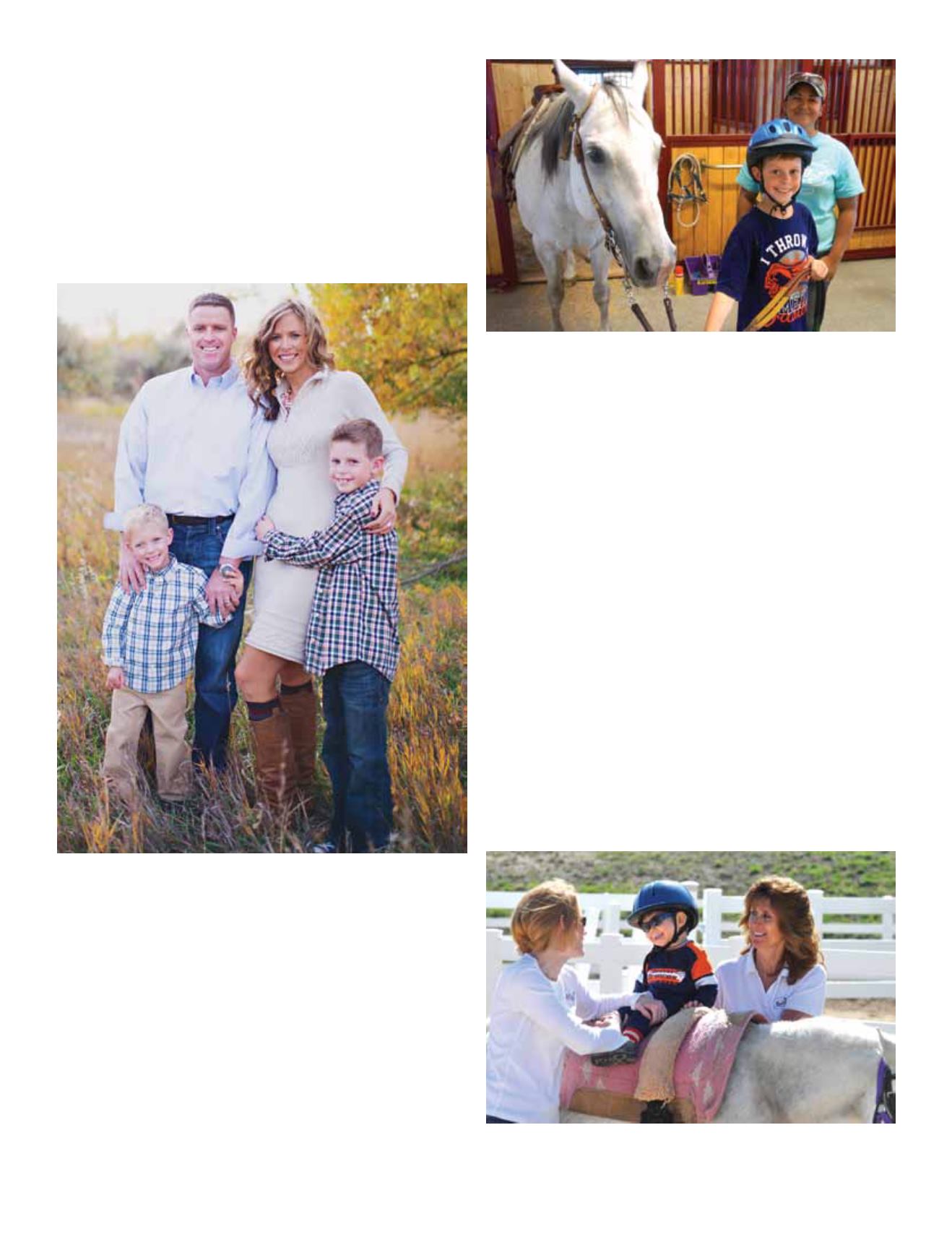
86 SIDELINES NOVEMBER 2013
FOR HORSE PEOPLE • ABOUT HORSE PEOPLE
Tanner and Whinny, his equine partner for able-bodied lessons
at SaddleUp!.
Photo by Jennifer Cline
keep up with the latest advances.
“Shery’s vision for SaddleUp! was to create a facility that provided
the most quality therapies to individuals with special needs, but
also she wanted to focus on treating the entire family – from the
comfort of the viewing lounge to parent-to-parent networking and
family advocacy,” stated Adam Daurio, Esq., who has worn many
hats – volunteer (2005-2008), Board of Directors (2008-2010) –
and in 2010 became Executive Director of SaddleUp!. Adam said,
“By involving an equine in the activities and therapies, the results
are far greater than traditional therapies. We can attribute that
to many scientific and well-researched methods, but at the end
of the day when you are watching it, you just know that magic is
happening.”
Equine assisted therapies date back to the ancient Greeks, and
modern therapeutic riding techniques began to evolve when Liz
Hartel, of Denmark, made news by winning the silver medal for
dressage in the 1952 and 1956 Olympics. Her legs from the knees
down were paralyzed from polio and she had to be assisted on and
off her horse. Her accomplishments in international equestrian
competition contributed to the launch of the therapeutic riding
movement. In North America, therapeutic riding centers date back
to the early 1960s.
It doesn’t matter who said “the outside of a horse is good for
the inside of a human” – it’s true. This is not mere romance; it
is also scientific fact. The motion of a horse walking mimics the
movement of a human walking, providing unique neuromuscular
stimulation to the rider. You might think that all you’re doing is
sitting there, but the very movement of the horse’s slow four-beat
gait engages all the adductor muscles of the thighs and the core
The Cline family: Carson, Chris, Jennifer, and Tanner.
Photo by Erika Ashauer/Free Bird Photography
Erik receives physical therapy on Isabelle from therapist Debbie
Mogor (right), assisted by volunteer Katherine Rogers
.
Photo by Chad Chisholm
muscles of the trunk.
SaddleUp! Foundation programs are designed to help individuals
with Muscular Dystrophy, Traumatic Paralysis, Cerebral Palsy,
Multiple Sclerosis, ADD/ADHD, Autism and Down Syndrome, as
well as other disorders and conditions.
“We need volunteers, and what we promise to people who
decide to get involved with SaddleUp! is that they too will benefit
from close proximity with the horses,” Adam said. “We would love
to hear from people who are interested in helping with horse care,
cleaning the offices and barns and landscaping chores. On our
website we have a wish list of items and equipment that we need
for equine-assisted therapies, so that people can help in many
different ways and still be a part of the magic that happens at
SaddleUp! Foundation.”
The “Inside” Benefits
Older brother Tanner found it boring to watch Carson’s hour-
long sessions at SaddleUp! so in the summer of 2012, the Clines
decided to invest in a weekly lesson for Tanner. Two lessons once
a week cost the young parents nearly $600 per month, but they
considered it money well spent.
“Carson is easy-going, free-spirited and social, but Tanner is
very shy and we decided to start Tanner with private lessons,”
explained Jennifer. “Carson loves the horses more, but over time
we could see that there have been benefits for Tanner, too.”


